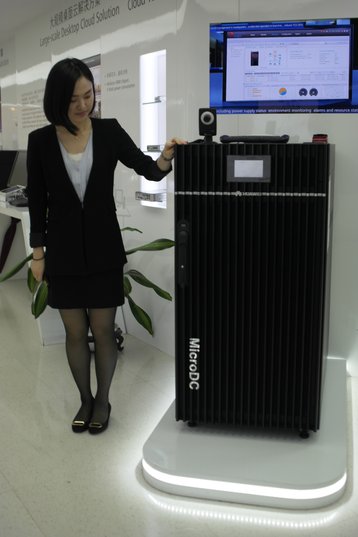Edge computing, also referred to as fog computing (like the cloud, only closer), is gaining in popularity for many reasons. But the decentralization of computing power, processing and storage presents unique challenges for those tasked with monitoring and managing the IT infrastructure.
The reasons
Data such as streaming video content and other information that is bandwidth-intensive is kept local, where it is needed. On-premise computing is being used for things like facial recognition and security at businesses, public spaces and entertainment venues and process automation at retail locations and branch offices.
Edge computing also enables lower latency and because an Edge data center can be located in a secondary market, data center operators also see lower bandwidth costs, less expensive colocation space, and access to those Tier 2 markets, without the high cost of Tier 1 infrastructure. Edge can also be used as a backup site, far from the primary site. This could mean better disaster recovery, because the second site could be kept safe, far from potential weather and power failure problems experienced by the primary location.
Edge computing also makes it possible to supplement the enterprise data center with more computing capacity, without expanding the present physical infrastructure, giving the organization greater flexibility.
In addition, self-contained micro data centers are becoming popular for temporary, military, mobile and disaster relief applications, because they can be set up and taken down quickly.
It is predicted that by the year 2020, there will be 50 billion “smart” things, all generating data. When it comes to the IoT, Edge computing means gathering, analyzing and processing information closer to where it was generated, where it will be used, not sending it over the network to a general warehouse far away for storage and processing. Data from an airplane in flight can be analyzed while the plane is still in the air, giving the crew information in real time.
The impact
Already the demands of Edge computing are influencing the way new data centers are designed and existing data center expansions are configured. If Edge computing is mostly modular, physical space must be found to accommodate those needs. It will even influence the way manufacturers are looking at the future of servers, trending toward smaller, lighter, self-contained, more mobile units.
All this distributed infrastructure can prove challenging for those entrusted with its management, monitoring and optimization. First, although the infrastructure is distributed geographically, a data center manager must have a way to gather all this data in one place for efficient analysis, decision making and reporting. A single pane-of-glass view of all the infrastructure can be delivered by a Data Center Infrastructure Management (DCIM) system.
Second, because some of the distant locations might be unmanned, the ability to monitor and control infrastructure remotely will become key. The manager can’t physically visit all the remote sites to make adjustments, so remote control must be enabled. This virtual command center should allow the manager to visualize and control all the devices, manage CPU levels, power and cooling as well as report on and control both critical and non-critical systems, remotely. A manager who is a town or even a continent away, should be able to mitigate risks at a location which is unmanned or only staffed part-time, without the travel expenses of being there physically.
If an organization chooses Edge computing to serve its customers better, for greater security, lower latency, or any other reason, it shouldn’t mean additional problems for the IT or facilities staff. The use of a DCIM software solution brings the Edge into a centralized view, with the ability to drill down to device diagnostics that only an on-site technology can usually gather.
As the Edge takes more of the processing burden from the large, centralized data centers, visibility and control into CRACs, PDUs, BMS, office lighting, alarms, cooling, power, even desktops and doors – from a central location – is paramount to efficient operations. The use of a DCIM solution will provide the key functionality to those in charge of Edge facilities and enable them to deliver faster services without expensive, on-site human presence.
Experts say that the future of computing will be hybrid: a combination of on premises, off premises, cloud, Edge, etc. The trick is right-sizing facilities to achieve both reliability and efficiency.
Whether or not Edge is right for a company depends on what the data is doing and what the organization is trying to accomplish. Latency and security must be taken into consideration.
Regardless of where the processing and storage are taking place – a centralized location, or scattered Edge facilities – a DCIM solution will help manage infrastructure more effectively, save on power and cooling costs, manage equipment lifecycle and overall optimize and make the data center more efficient.
Mark Gaydos is Chief Marketing Officer for Nlyte Softare, a provider of DCIM solutions



